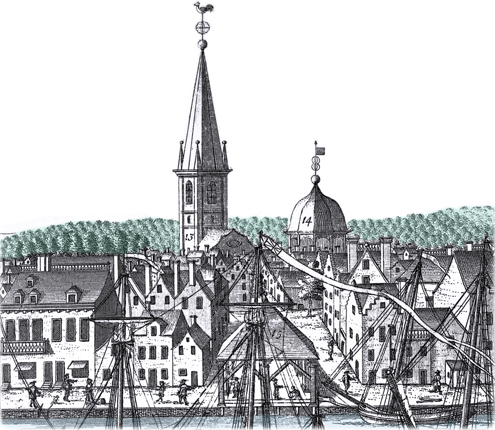
Wall Street in 18th Century
Wall Street entered 18th century with the New York's second City Hall under construction. The building, facing Broad Street, was built from 1699 to 1703, at the present site of the Federal Hall National Memorial (26 Wall Street). George Washington was inaugurated here, On April 30, 1789, as the first President of the United States of America. New York City was then the national capital.
The Exchange was established in 1670 at the foot of Wall Street (on the right in the Burgis View). It was also used as a slave market. In 1752, a new Exchange was erected on the same site and was in operation until 1762. The Wall Street Ferry was built on the place in 1853.
The William Pitt statue by English artist Joseph Wilton (1722-1803) was commissioned in 1768 and installed in September 7, 1770, at William Street. It was partially destroyed in September, 1776. William Pitt (1708-1778), Earl of Chatham, was a parliamentary hero, who championed the cause of the American colonies against the Stamp Act.
The New York Stock Exchange was founded in 1792 and the New York Stock & Exchange Board was formally created in 1817. The present neoclassic building was completed in 1903.
The Tontine Coffee House was established in 1793, on the northwest corner of Water Street. The institution was renamed the Tontine Building in 1834. The building was demolished in 1855 and replaced by a new Tontine Building in the same year.
More: Wall Street in 19th century ►
Wall Street in 1716-1718 seen from East River. Fragment of the William Burgis view. The first temple of Trinity Church faced the Hudson River. It was burned in 1776 and rebuilt from 1788 to 1790, facing Wall Street.
Wall Street in 18th Century
|
Copyright © Geographic Guide - Images of NYC in 18th Century. |
The East River waterfront of Wall Street in 1798, seen the spires of the old temple of Trinity Church (the tallest) and the old temple of the First Presbyterian Church.
